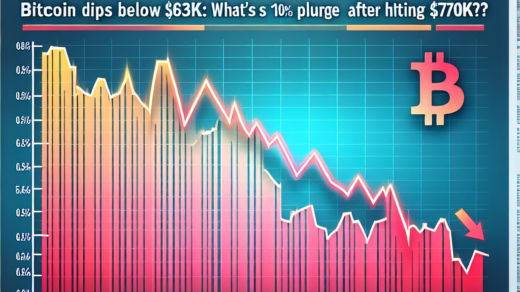Bitcoin Remains Resilient Amid Bank of Japan’s Rate Hike
In the early hours of Friday in Asia, Bitcoin (BTC) maintained its position above $104,000, displaying remarkable stability despite significant financial developments worldwide. The Bank of Japan (BOJ) recently implemented a hawkish rate hike, raising its benchmark borrowing cost to the highest level in 17 years while also adjusting its inflation forecasts.
Understanding the BOJ’s Policy Shift
The BOJ’s policy statement highlighted a positive outlook for wages, which suggests a potential for continued monetary tightening in the future. “If the outlook presented in the January Outlook Report will be realized, the Bank will accordingly continue to raise the policy interest rate and adjust the degree of monetary accommodation,” said the BOJ, as reported by ForexLive. This statement signifies a commitment to addressing inflation and suggests that further rate hikes may be on the horizon.
The Impact on Global Markets
Following the BOJ’s decision, the Japanese yen appreciated over 0.6% to 155.12 against the U.S. dollar. Despite this, other risk assets, including cryptocurrencies like Bitcoin, demonstrated resilience. Bitcoin traded flat, showing little change throughout the day, indicating that investors are viewing it as a stable asset amidst the fluctuating economic landscape.
Comparing Current Market Sentiment to Previous Events
This current stability is particularly noteworthy when compared to the market’s reaction to the BOJ’s previous rate hike in late July, which had a more pronounced negative impact on risk assets, including cryptocurrencies. The recent bullish sentiment around Bitcoin may suggest that investors are more optimistic about its potential in the face of traditional financial shifts.
Trump’s Executive Order: A Game Changer for Cryptocurrency
Adding to the complexity of the current financial landscape, President Donald Trump recently signed an executive order aimed at banning the digital dollar while promoting innovation in cryptocurrency and artificial intelligence. This policy shift may have significant implications for the future of digital currencies in the United States, potentially enhancing Bitcoin’s appeal as an alternative investment.
U.S. Economic Data Encourages Investor Optimism
Recently released data from the United States showed that the “all tenant rent” index, which serves as a leading indicator for shelter inflation in the Consumer Price Index (CPI), rose at a slower pace in the last quarter. This slower growth has led to renewed hopes among investors that the Federal Reserve may reconsider its hawkish stance on interest rates in December, further supporting risk assets like Bitcoin.
Bitcoin’s Future: What Lies Ahead?
As Bitcoin continues to hold steady, market participants are keenly watching for potential developments that could influence its price trajectory. The ongoing interplay between traditional financial policies and the cryptocurrency market creates a complex environment for investors. For those looking to invest in Bitcoin, understanding the various factors that impact its price is crucial. If you’re new to Bitcoin and want to learn how to buy Bitcoin, check out our comprehensive guide on How to Buy Bitcoin.
Investment Strategies and Considerations
Investing in Bitcoin and other cryptocurrencies requires a well-thought-out strategy. It’s essential to stay informed about market trends, regulatory changes, and macroeconomic factors that could affect digital currencies. Diversification is also key; consider exploring other cryptocurrencies like Ethereum, Solana, and XRP. For guidance on how to purchase these cryptocurrencies, you can refer to our articles on How to Buy Ethereum, How to Buy Solana, and How to Buy XRP.
Final Thoughts
As Bitcoin hovers near the $104K mark, the broader economic and regulatory environment will continue to play a critical role in shaping market sentiments. The recent actions by the Bank of Japan and the U.S. government underscore the dynamic nature of global finance and its relationship with cryptocurrencies. Investors should remain vigilant and informed to navigate this evolving landscape successfully.
In conclusion, Bitcoin’s resilience during this period of economic change is a testament to its growing acceptance and potential as a hedge against traditional financial risks. The coming weeks will be pivotal in determining Bitcoin’s trajectory, and staying informed will be essential for anyone looking to invest.
For more insights into cryptocurrency and investment strategies, visit The Bitcoin Bulletin.











